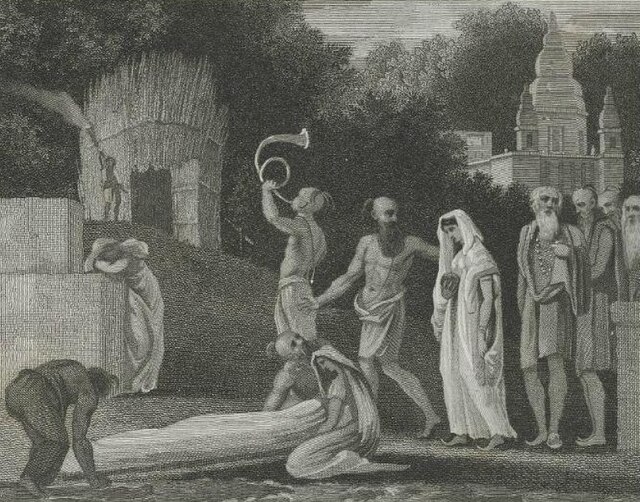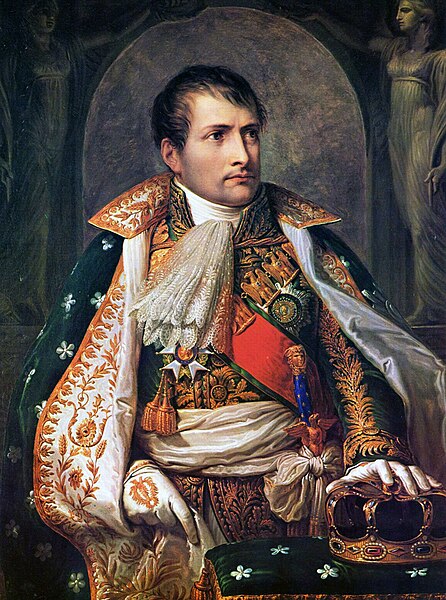Bengal Sati Regulation, 1829
The Bengal Sati Regulation, or Regulation XVII, A. D. 1829 of the Bengal Code was a legal act promulgated in British India under East India Company rule, by the then Governor-General Lord William Bentinck. The act made the practice of sati or suttee—or the immolation of a Hindu widow on the funeral pyre of her deceased husband—illegal in all jurisdictions of British India and subject to legal prosecution.
Aquatint from the early 19th century purporting to show ritual preparation for the immolation of a Hindu widow, shown in a white sari near the water, atop the funeral pyre of her deceased husband.
An etching from the early 19th century purporting to show a Hindu widow being led—past the body of her deceased husband—to the funeral pyre to sit atop it beside her husband's body and to immolate herself.
Plaque of Last Legal Sati of Bengal, Scottish Church College, Kolkata
Widow Burning in India (August 1852).
Lieutenant General Lord William Henry Cavendish-Bentinck, known as Lord William Bentinck, was a British soldier and statesman who served as the governor of Fort William (Bengal) from 1828 to 1834 and the first Governor-General of India from 1834 to 1835. He has been credited for significant social and educational reforms in India, including abolishing sati, forbidding women to witness the cremations on the ghats of Varanasi, suppressing female infanticide and human sacrifice. Bentinck said, "the dreadful responsibility hanging over his head in this world and the next, if… he was to consent to the continuance of this practice (sati) one moment longer." Bentinck after consultation with the army and officials passed the Bengal Sati Regulation, 1829. The challenge came from the Dharma Sabha which appealed in the Privy Council, however the ban on Sati was upheld. He reduced lawlessness by eliminating thuggee – which had existed for over 450 years – with the aid of his chief captain, William Henry Sleeman. Along with Thomas Babington Macaulay he introduced English as the language of instruction in India. Mysore was annexed under his presidency.

Elisa Bonaparte; whom Bentinck would not countenance retaining the Principality of Lucca and Piombino, first granted to her by Napoleon in 1805.
Territory of the Grand Duchy of Tuscany in 1796
Portrait of Napoleon as King of Italy. He renounced the Italian throne, along with the French, on 11 April 1814.
Lady William Cavendish-Bentinck (c 1783–1843) (Ellen Sharples)








